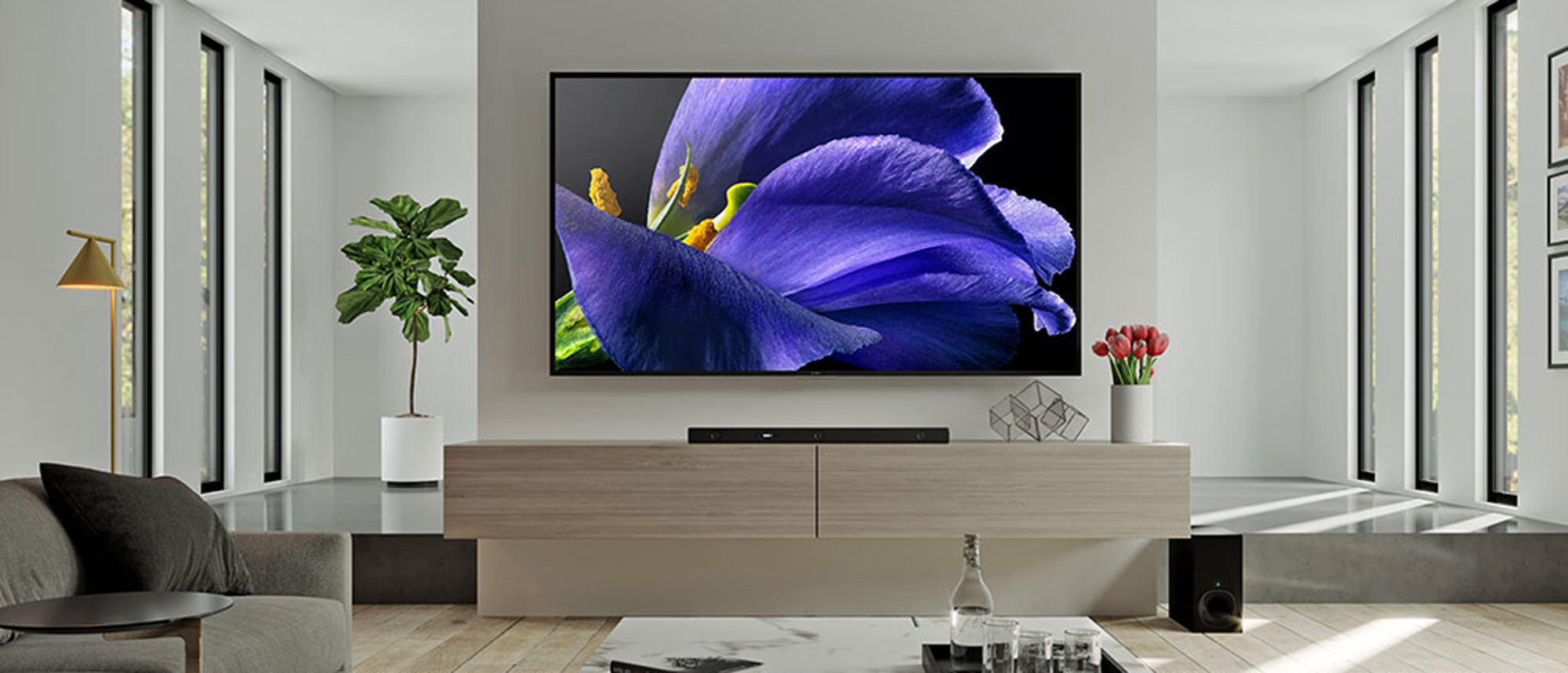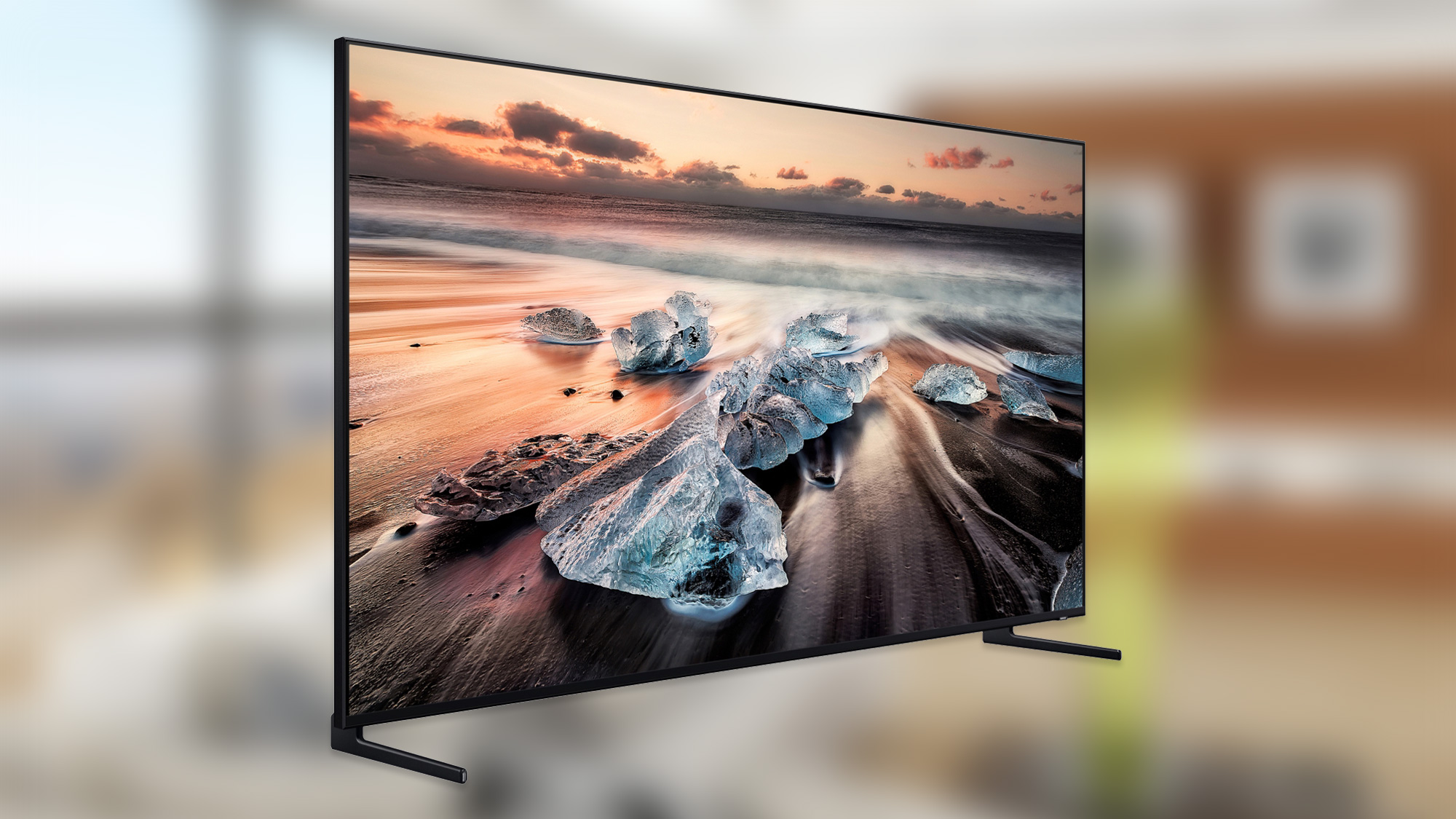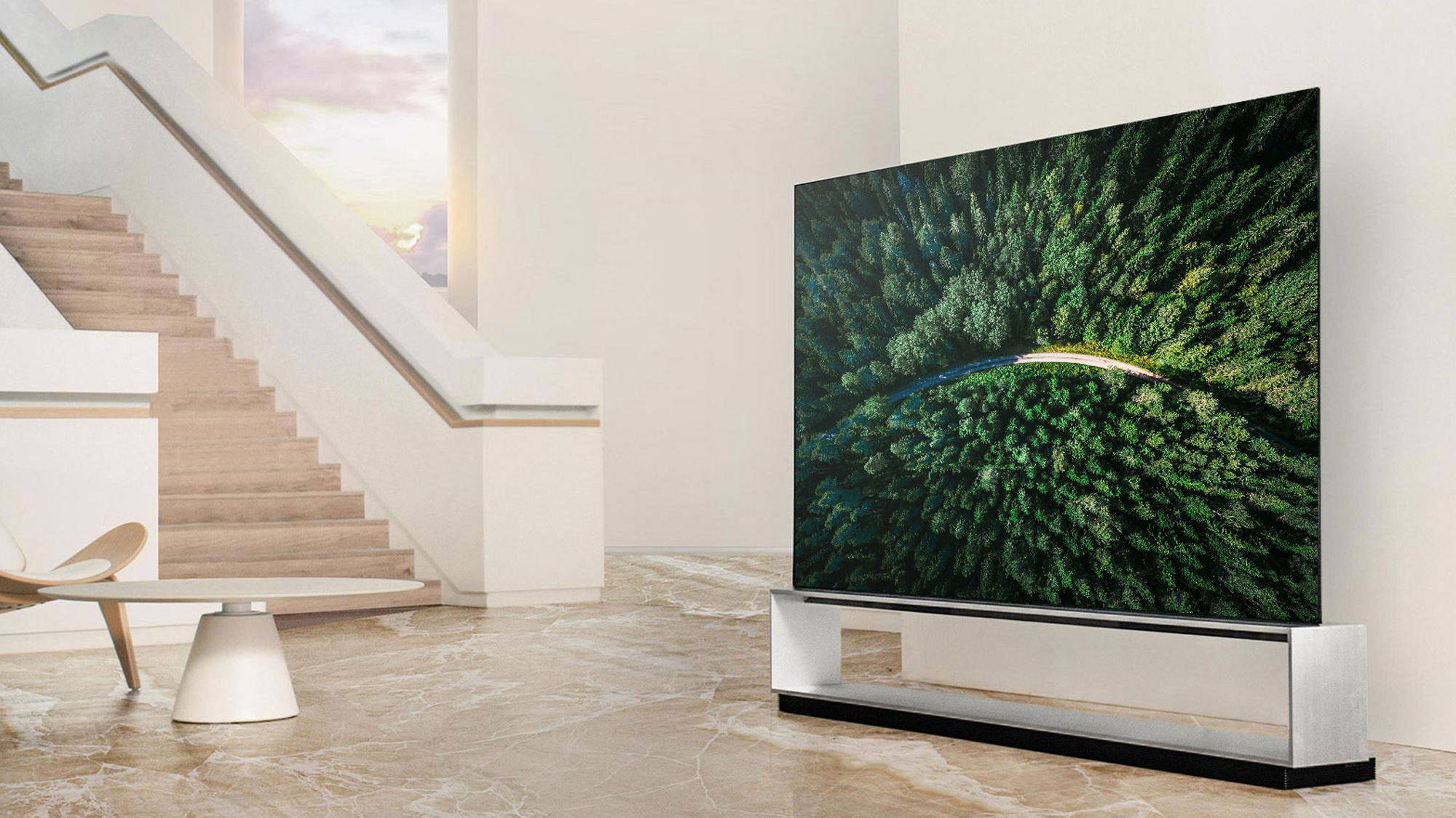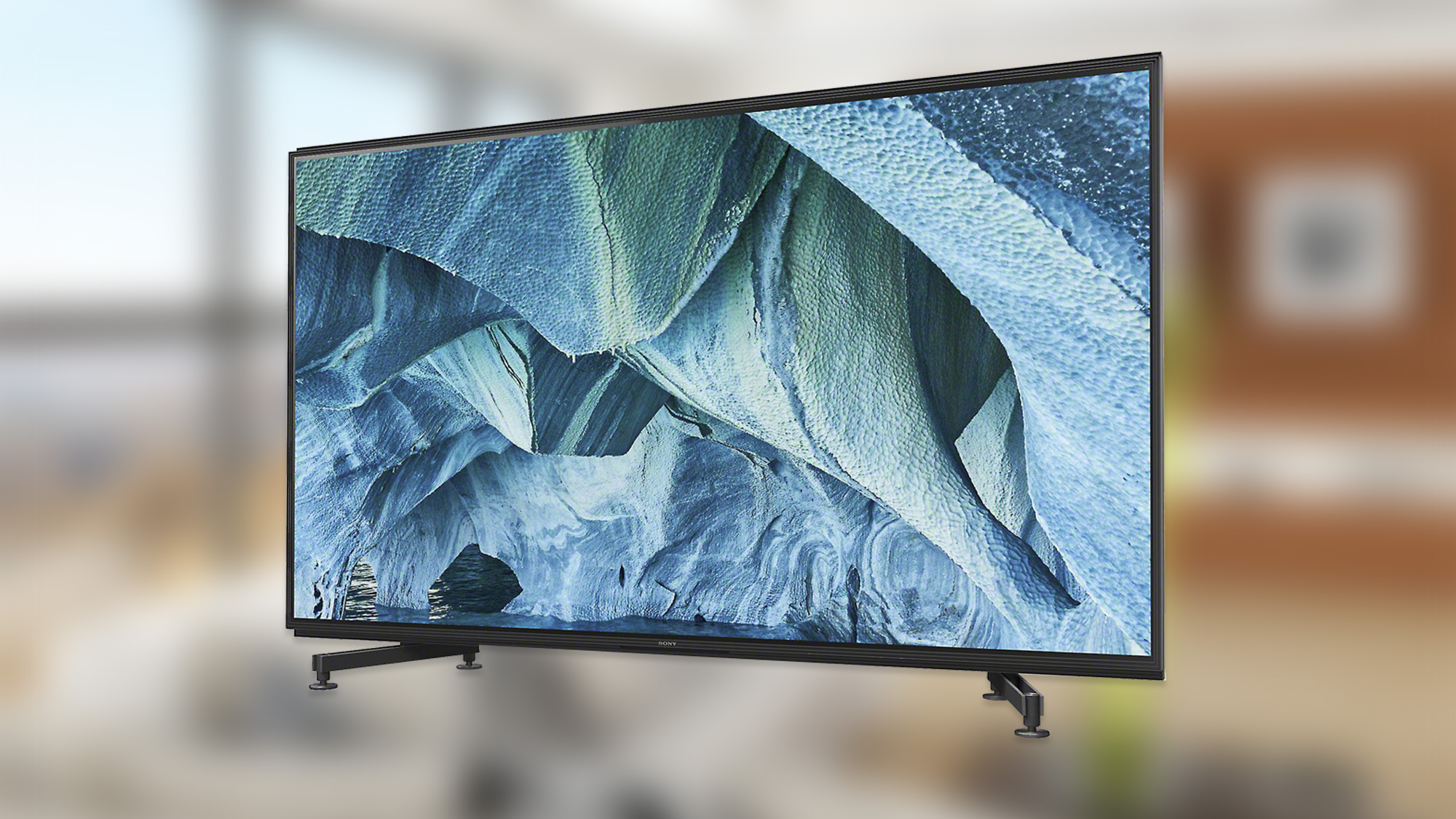8K TVs are here: Prices and new models from Samsung, LG, Sony and more
If you want to upgrade to an 8K TV, we're here to walk you through the many 8K models on the market.

We're still in the midst of the 4K era of TVs, but the next big leap in TVs is here, with several 8K TVs already available for purchase. We don't recommend most people embrace the new ultra-high resolution just yet, but if you want to be one of the first passengers on the 8K train, we help.
We've looked at 8K TVs from every major manufacturer, from trade show demonstrations to extended hands-on and testing. And, to help you sort out one 8K set from another, we've put together a handy guide that runs down every model, along with prices, key features, and our opinions on the good and bad of each.
Why you might want an 8K TV (and why you should wait)
Why you can trust Tom's Guide
There are still some big problems with 8K TVs in general, though, chief among them being the continued absence of any native 8K content. Yes, you can find a number of 8K videos through sites like YouTube and Vimeo and Japanese broadcaster NHK offers a single channel of 8K content (if you can get it). But there are no major movie releases in 8K, and no word on when you'll even be able to buy 8K Blu-ray discs or a player that can handle them. There's no word on streaming from services like Netflix, either. For all intents and purposes, there are no real options for 8K content beyond a few samples for demoing the TV.
Two big 8K events are coming in 2020, however: In July, the Tokyo Olympics will be broadcast in 8K, giving a major boost to both awareness of the new format and adoption of the pricey TVs. The other huge 8K push will come during the holiday season, when the PlayStation 5 and Xbox Project Scarlett start selling. Both game consoles promise resolutions up to 8K, and will support HDMI 2.1, the connectivity standard necessary to make that resolution work at the necessary refresh rates.
From everything we've seen thus far, that makes late 2020 the earliest most people should even consider buying an 8K TV, though the Olympics will provide a good excuse for early adopters to drop a few grand on a new set and have viewing parties for the Olympics to show off their new TV. If that's you, or if you're serious about being on the cutting edge of video technology, whether it's for professional reasons or just to maintain bragging rights, we can still help you figure out which 8K TV is the best option for you.
Samsung: The most 8K TVs at the most affordable prices
Far and away, the biggest name in 8K technology right now is Samsung. The Korean manufacturer made waves in 2018 when it announced the first commercially available 8K TV, and since then, the company has stayed at the forefront of the 8K conversation with new models and new screen sizes.

The variety in sizes is key, because, even among the well-heeled shoppers in the market for 8K TVs, not everyone has room to set up a floor standing 98-inch TV. This year, Samsung has distinguished itself with 8K TVs that actually come in sizes that people are likely to buy, with models starting as small as 55 inches.
Sure, you can still get yourself a really big TV – Samsung also has models measuring 75, 82 and 98 inches – but if you're in the mood for higher resolutions at more reasonable sizes, Samsung is the only company making these 55- and 65-inch 8K sets today.
| Series | Model Number | Screen Size | Price |
|---|---|---|---|
| Q900 QLED | QN55Q900RBFXZA | 55 inches | $2,199.99 |
| Q900 QLED | QN65Q900RBFXZA | 65 inches | $2,999.99 |
| Q900 QLED | QN75Q900RBFXZA | 75 inches | $4,499.99 |
| Q900 QLED | QN82Q900RBFXZA | 82 inches | $5,999.99 |
| Q900 QLED | QN98Q900RBFXZA | 98 inches | $69,999.99 |
But even as an 8K TV, the Samsung Q900 sets have limited 8K support. The first 2018 models required running four simultaneous HDMI connections in order to create a combined 8K picture. The newer 2019 models offer better support for actual 8K, but with a single HDMI 2.1 port that can handle 8K picture.
That said, in the times that we've been able to spend going hands-on with Samsung's Q900 models, we've been impressed on several levels. Obviously, the resolution is superb, but that's not unique to Samsung's 8K models. What is unique, however, is the impressive QLED display, delivering the apotheosis of quantum-dot enhancement. Between the 33 million pixels, a huge number of individual dimmable backlights, black levels that approach OLED-levels of quality and the vibrant colors that only LCD can deliver.
Samsung has also poured a lot of time and money into it's upscaling, using machine learning to create upscaling algorithms that not only map the pixels to the higher resolution, but add texture and sharpness that improves upon the original, lower-resolution source material. It's easy to be skeptical of claims about AI upscaling, but after seeing several demos of the technology, I'm seriously impressed.
Perhaps more exciting than the hardware inside is the price. The 65-inch Q900 lets you put a good sized 8K TV in your home for a reasonable $2,999.99 price, even less than some of the top 4K models, like the comparably sized Sony Master Series A9G OLED TV. While 65-inches is probably the absolute smallest you'd want to go with an 8K set – studies suggest that anything less than 80 inches might be too small to really get the benefit of 8K – it does mean that you can buy this next gen technology at realistic consumer prices.
LG: 8K OLED dominance
LG has two different sizes of 8K TV on the market, but unlike most competitors, whose models differ only by screen size, LG's two 8K TVs also use very different technologies. The 75-inch Nano 9 Series is the smaller of the two, and uses an LCD panel with LG's NanoCell filtering for sharper contrast and purer color.
As an LCD set, it competes directly with the 8K models put out by Samsung and Sony. And when we spent some time with the LG Nano 9 Series back in January, we were impressed not only with the resolution, but with the excellent brightness and color that the 75-inch set produced. And with a price of $4,499, it's another 8K set that's actually attainable to the average videophile.

The other 8K set LG is offering is the 88-inch LG Signature Z9 OLED, the only 8K OLED on the market. We recently had the chance to test and review the monstrously large OLED TV, and it was far and away the best display we've ever seen. The color was superb, the black levels were perfect, and the resolution meant that it was sharp and detailed whether viewed from 5 feet away or 5 inches.
| Series | Model Number | Screen Size | Price |
|---|---|---|---|
| Nano 9 | 75SM9970PUA | 75 inches | $4,499.99 |
| OLED Z9 | OLED88Z9PUA | 88 inches | $29,999.99 |
It's also a stunner, with a sleek design, a stylish built-in stand that houses some of the TV's components and a beefy 4.2-channel, 80-watt sound system that sounds just as good as the 8K panel looks. Check out our hands-on LG Z9 8K OLED review to get the full scoop, but the summary is simple: We love it, but we aren't ready to recommend it to people just yet.
The Z9 OLED is also very expensive at $29,999. The Z9 OLED also highlights how unsettled the new 8K landscape is: The TV requires a special format converter box to handle the various video formats and codecs that are gaining 8K TV playback. The fact that this sort of basic support is still being hashed out tells you everything you need to know about being an early adopter in the video space – when you're on the cutting edge, you're also pioneering out in unknown territory, and you lose some of the niceties of the civilized world where TVs just work the first time, without extra gear or constant software updates.
Sony: Huge screens with incredible sound
Sony's 8K TVs are seriously impressive, and the company has pulled out all the stops to make the 8K experience the most premium the company offers, with features like dimmable backlighting zones for better contrast and HDR performance, and the most advanced version of Sony's Acoustic Multi-Audio, which uses a special front-facing speaker array above and below the display to replicate the same sound-from-screen experience we loved in Sony's OLED TVs, like the Master Series A9G.

Both sets also use Sony's Picture Processor X1 Ultimate, which they claim is the best video processor yet in a consumer display. Sony prides itself on having the best video processing in the business, and the X1 Ultimate uses all of that muscle to make 8K content look great, and to handle upscaling, making everything else look good on the higher-resolution display.
Sony's 8K models are also really big, available in 85- and 98-inch sizes. No smaller sizes here for average sized living rooms; Sony's approach is simple: Go big or go home. If you want the best experience in smaller sizes, Sony will direct you to its 4K sets. The benefits of 8K resolution are best enjoyed on very large screens, so that's all Sony is making.
| Series | Model Number | Screen Size | Price |
|---|---|---|---|
| Z9G Master Series | XBR85Z9G | 85 inches | $12,999.99 |
| Z9G Master Series | XBR98Z9G | 98 inches | $69,999.99 |
They're also among the most expensive models on the market. The smaller 85-inch Master Series Z9G model is a relatively modest $12,999. That's twice what you'll pay for Samsung's 82-inch competitor, but it's less than LG's 88-inch OLED.
But there real shocker is the Sony 98-inch Z9G, which sells for an astonishing $69,999. That's the most expensive 8K TV on the market by far – you can pick up two of LG's OLED models for that price, and still have about 10 grand left over.
More 8K models on the horizon
While the top three TV manufacturers slug it out with the first 8K TVs you can buy, other manufacturers are waiting in the wings to offer their own 8K models as the technology matures and content becomes more widely available.
TCL already has an 8K model, an 8K version of the TCL 8-Series QLED Roku TV, but they haven't brought it stateside yet. Word is that TCL is waiting to launch the model in 2020, when it can take advantage of the surge in 8K interest that will come with the Olympics and new gaming consoles.
Sharp has a 70-inch 8K model in its Aquos line, but again, it's not available in the United States. Due to the vagaries of international brand licensing, Sharp owner Foxconn makes and sells its own TV outside of North America, but U.S. manufacturing and licensing rights belong to competitor Hisense. If you really, really want one, the 70-inch Sharp Aquos 8K TV (LV-70X500E) sells for €11,199 in Europe.
Panasonic has also demoed 8K displays, showing off the record-setting 145-inch Hi-Vision plasma display back in 2012. But there's no indication that Panasonic has any plans for an 8K model in the near future.
But as we approach the start of the new year, and begin anticipating all of the announcements and surprises at the CES 2020 event, there's surely a new batch of TVs set to be announced that embrace the higher resolution of 8K. And, given the competitive one upmanship that TV manufacturers engage in, it wouldn't surprise me to see some early demonstrations of even higher 12K and 16K resolutions at the show.
Sign up to get the BEST of Tom's Guide direct to your inbox.
Get instant access to breaking news, the hottest reviews, great deals and helpful tips.
Brian Westover is currently Lead Analyst, PCs and Hardware at PCMag. Until recently, however, he was Senior Editor at Tom's Guide, where he led the site's TV coverage for several years, reviewing scores of sets and writing about everything from 8K to HDR to HDMI 2.1. He also put his computing knowledge to good use by reviewing many PCs and Mac devices, and also led our router and home networking coverage. Prior to joining Tom's Guide, he wrote for TopTenReviews and PCMag.

